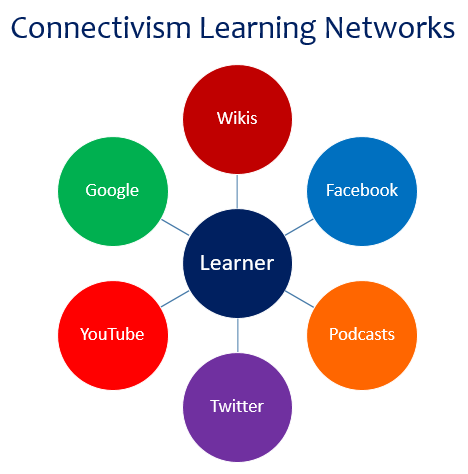In today's digital age, traditional classroom models are evolving to meet the demands of an interconnected world. Connectivism, a learning theory that emphasizes the importance of connections and networks, has emerged as a vital framework for effective education; "students should combine thoughts, theories, and general information in a useful manner" (WGU Washington). This blog post explores the significance of connectivism in the classroom and its impact on student learning.
1. Active Participation and Collaboration:
Connectivism encourages active participation and collaboration among students. It recognizes that learning is not a solitary endeavor but a social process that thrives on connections. By incorporating collaborative activities, group discussions, and project-based learning, educators foster a rich environment where students can interact, share ideas, and build networks of knowledge. Some examples of useful collaboration include science forums, a class Twitter account, and socratic seminars.
2. Access to a Vast Array of Resources:
Connectivism acknowledges the abundance of
digital resources available to learners. In the classroom, this means providing
students with opportunities to explore online materials, access educational
websites, and engage with multimedia content. By leveraging technology,
educators can expose students to diverse perspectives, real-world examples, and
up-to-date information, enriching the learning experience. The below infographic from The Peak Performance Center has a few different connectivism learning networks a student can use.

3. Critical Thinking and Digital Literacy:
Connectivism emphasizes the development of
critical thinking skills and digital literacy. In the digital era, students
need to navigate and evaluate online information effectively. Educators can
guide students in discerning credible sources, fact-checking, and engaging in
critical analysis. By nurturing digital literacy, students become adept at
finding, evaluating, and utilizing information from various digital platforms. This ties into my first blog post, which discusses how students can effectively use sources like Google, Wikipedia, and ChatGPT.
4. Personalized Learning and Self-Directed Exploration:
Connectivism supports personalized learning experiences tailored to individual students' needs and interests. It encourages students to take ownership of their learning by exploring topics of personal relevance and connecting with experts or resources beyond the classroom. This approach fosters autonomy, intrinsic motivation, and a lifelong love for learning. Many classes have moved away from making students write about specific topics and have moved toward allowing students to select prompts and topics that interest them. An example in my personal life comes from my sophomore year of college where I was allowed to write a blog post about anything I wanted, and I wrote a piece on the music building expansion on Whitworth's campus (the full blog can be found here). We were given the freedom to write what we wanted, which fostered deeper learning and great conversations among peers.
5. Preparation for the Digital Age:
Connectivism equips students with the skills
necessary to thrive in the digital age. By embracing technology and incorporating
digital tools into the classroom, educators prepare students for a future that
demands adaptability, digital literacy, and the ability to navigate rapidly
evolving networks of information. Jeff Utecht and Doreen Keller wrote a piece, titled Becoming Relevant Again: Applying Connectivism Learning Theory to Today's Classroom, that covers the eight principles of connectivism learning theory and how to apply these principles to the classroom, which is pretty rad!
Connectivism offers a powerful framework for
21st-century education. By embracing this learning theory in the classroom,
educators can create dynamic and engaging learning environments that foster
collaboration, critical thinking, and digital literacy. Connectivism empowers
students to become active participants in their own learning, navigate digital
resources effectively, and develop the skills necessary to succeed in an
interconnected world. As educators, embracing connectivism allows us to unleash
the full potential of our students and prepare them for a future where
connections and networks play a vital role.
(Created with assistance from Generative AI)


Hi Devin,
ReplyDeleteI think your insight on Connectivism is spot on. You showed a clear understanding of the topic and connection to practice. As someone who will also be teaching 2nd grade, I love hearing the thoughts of other educators and how the plan to evolve with the changing world around us.
I also love how you plan on implementing the ability for your students to be their most authentic selves, specifically through being able to write in their native language. I do truly believe this will be more impactful than we realize.
My hope is that as you go through your program and into the classrooms you see way that the connectivism idea comes to be. It's a powerful approach when used appropriately in the right area. Like everything it's something to have in your tool belt, understand how to use it and use it when your students need it.
ReplyDelete